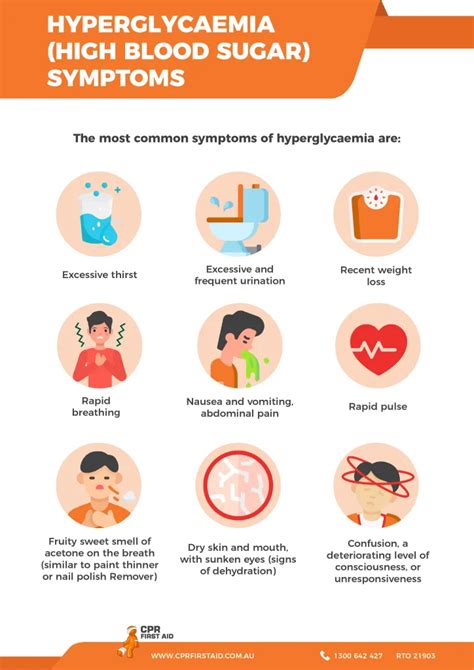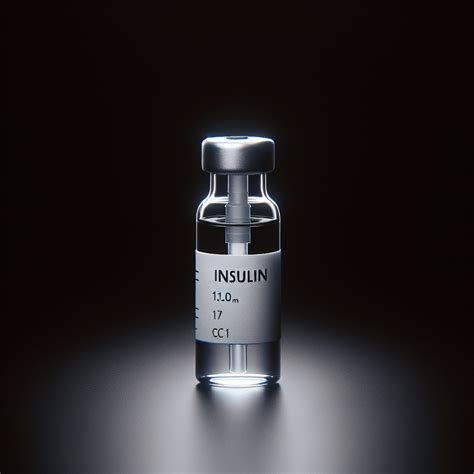High blood sugar, also known as hyperglycemia, is a condition where the level of glucose in the blood is elevated. This can be a serious health issue if left untreated, as it can lead to complications such as nerve damage, kidney damage, and even blindness. It is essential to recognize the symptoms of high blood sugar to seek medical attention promptly. In this article, we will delve into the importance of understanding high blood sugar symptoms, their effects on the body, and the steps to manage them.
The human body relies on insulin, a hormone produced by the pancreas, to regulate blood sugar levels. When we eat, our body breaks down carbohydrates into glucose, which is then absorbed into the bloodstream. Insulin helps to facilitate the entry of glucose into cells, where it is used for energy production. However, if the body is unable to produce enough insulin or becomes resistant to its effects, glucose builds up in the blood, leading to high blood sugar. Recognizing the symptoms of high blood sugar is crucial, as it allows individuals to take prompt action to manage their condition and prevent long-term damage.
High blood sugar symptoms can vary from person to person, but common signs include increased thirst and urination, fatigue, blurred vision, and slow healing of cuts and wounds. If left untreated, high blood sugar can lead to more severe complications, such as diabetic ketoacidosis, a life-threatening condition that requires immediate medical attention. It is essential to be aware of the risk factors for high blood sugar, including a family history of diabetes, obesity, physical inactivity, and certain ethnicities. By understanding these risk factors and recognizing the symptoms of high blood sugar, individuals can take proactive steps to manage their condition and reduce the risk of complications.
Understanding High Blood Sugar Symptoms
High blood sugar symptoms can be subtle, and some individuals may not experience any noticeable signs at all. However, common symptoms include:
* Increased thirst and urination: As the body tries to flush out excess glucose, it can lead to frequent urination and dehydration.
* Fatigue: High blood sugar can cause fatigue, as the body's cells are not receiving the energy they need.
* Blurred vision: High blood sugar can cause the lens in the eye to swell, leading to blurred vision.
* Slow healing of cuts and wounds: High blood sugar can affect the body's ability to heal wounds, making it more challenging for cuts and wounds to heal.
* Tingling or numbness in the hands and feet: High blood sugar can damage the nerves, leading to tingling or numbness in the hands and feet.
It is essential to recognize these symptoms and seek medical attention if they persist or worsen over time.
Risk Factors for High Blood Sugar
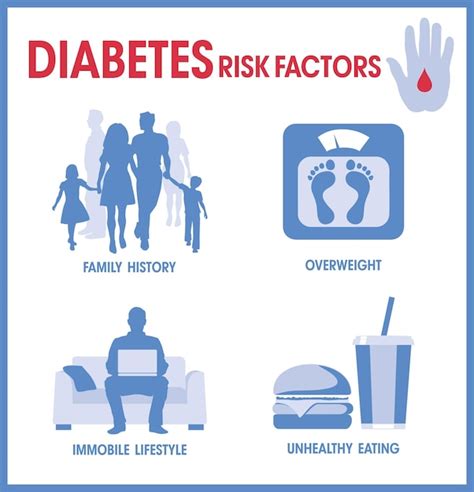
Several risk factors can increase the likelihood of developing high blood sugar, including:
* Family history of diabetes: Individuals with a family history of diabetes are more likely to develop the condition.
* Obesity: Being overweight or obese can increase the risk of developing insulin resistance and high blood sugar.
* Physical inactivity: A sedentary lifestyle can contribute to insulin resistance and high blood sugar.
* Certain ethnicities: Certain ethnic groups, such as African Americans, Hispanics/Latinos, and American Indians, are at a higher risk of developing diabetes.
* Age: The risk of developing diabetes increases with age, especially after the age of 45.
* Gestational diabetes: Women who have had gestational diabetes during pregnancy are at a higher risk of developing diabetes later in life.
* Polycystic ovary syndrome (PCOS): Women with PCOS are at a higher risk of developing insulin resistance and high blood sugar.
By understanding these risk factors, individuals can take proactive steps to reduce their risk of developing high blood sugar.
Managing High Blood Sugar
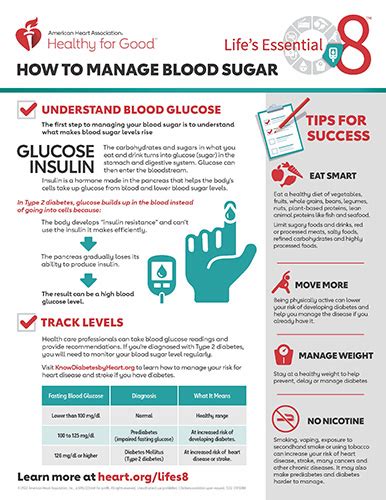
Managing high blood sugar requires a comprehensive approach that includes lifestyle changes, medication, and regular monitoring. Some effective strategies for managing high blood sugar include:
* Eating a healthy diet: Focus on whole, unprocessed foods, such as vegetables, fruits, whole grains, lean proteins, and healthy fats.
* Staying hydrated: Drink plenty of water to help flush out excess glucose.
* Engaging in regular physical activity: Aim for at least 150 minutes of moderate-intensity aerobic exercise, or 75 minutes of vigorous-intensity aerobic exercise, or a combination of both, per week.
* Getting enough sleep: Aim for 7-8 hours of sleep per night to help regulate blood sugar levels.
* Managing stress: Engage in stress-reducing activities, such as yoga, meditation, or deep breathing exercises.
* Monitoring blood sugar levels: Regularly check blood sugar levels to track progress and make adjustments to treatment plans as needed.
By incorporating these strategies into daily life, individuals can effectively manage high blood sugar and reduce the risk of complications.
Complications of High Blood Sugar
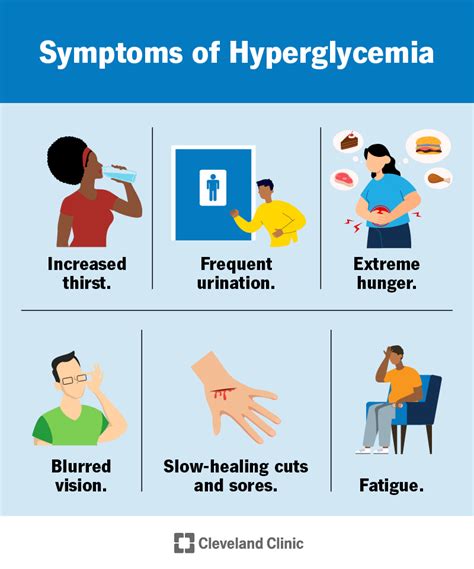
If left untreated, high blood sugar can lead to severe complications, including:
* Diabetic ketoacidosis: A life-threatening condition that occurs when the body produces high levels of ketones, which can cause the blood to become acidic.
* Nerve damage: High blood sugar can damage the nerves, leading to numbness, tingling, and pain in the hands and feet.
* Kidney damage: High blood sugar can damage the kidneys, leading to kidney failure and the need for dialysis or a kidney transplant.
* Blindness: High blood sugar can cause damage to the blood vessels in the eyes, leading to blindness.
* Foot damage: High blood sugar can cause nerve damage and poor circulation, leading to foot ulcers and amputations.
* Heart disease: High blood sugar can increase the risk of heart disease, including heart attacks, strokes, and high blood pressure.
By understanding the potential complications of high blood sugar, individuals can take proactive steps to manage their condition and reduce the risk of long-term damage.
Treatment Options for High Blood Sugar
Treatment options for high blood sugar depend on the individual's specific needs and the severity of their condition. Some common treatment options include:
* Medications: Oral medications, such as metformin, sulfonylureas, and meglitinides, can help to lower blood sugar levels.
* Insulin therapy: Insulin injections or an insulin pump can help to regulate blood sugar levels.
* Lifestyle changes: Eating a healthy diet, engaging in regular physical activity, and getting enough sleep can help to manage high blood sugar.
* Monitoring: Regularly checking blood sugar levels and tracking progress can help to make adjustments to treatment plans as needed.
By working with a healthcare provider, individuals can develop a personalized treatment plan that meets their unique needs and helps to manage high blood sugar.
Preventing High Blood Sugar
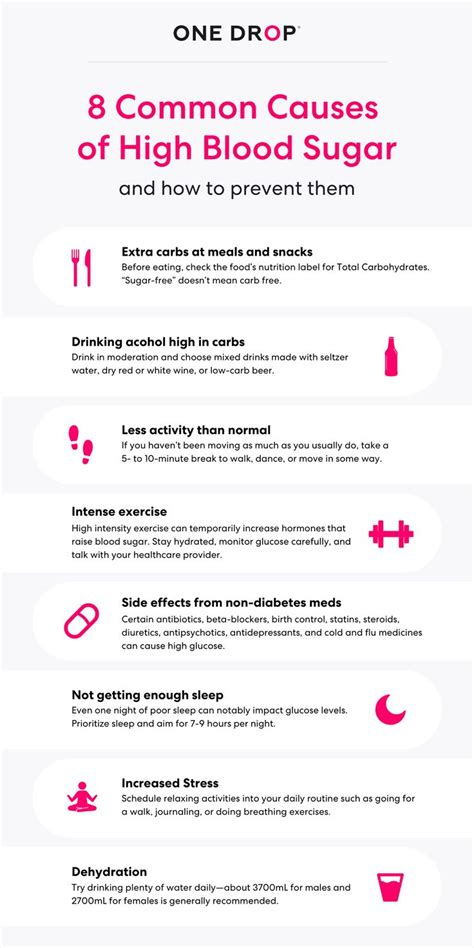
Preventing high blood sugar requires a comprehensive approach that includes lifestyle changes and regular monitoring. Some effective strategies for preventing high blood sugar include:
* Eating a healthy diet: Focus on whole, unprocessed foods, such as vegetables, fruits, whole grains, lean proteins, and healthy fats.
* Staying hydrated: Drink plenty of water to help flush out excess glucose.
* Engaging in regular physical activity: Aim for at least 150 minutes of moderate-intensity aerobic exercise, or 75 minutes of vigorous-intensity aerobic exercise, or a combination of both, per week.
* Getting enough sleep: Aim for 7-8 hours of sleep per night to help regulate blood sugar levels.
* Managing stress: Engage in stress-reducing activities, such as yoga, meditation, or deep breathing exercises.
* Monitoring blood sugar levels: Regularly check blood sugar levels to track progress and make adjustments to treatment plans as needed.
By incorporating these strategies into daily life, individuals can reduce the risk of developing high blood sugar and related complications.
Conclusion and Next Steps
In conclusion, high blood sugar is a serious health issue that requires prompt attention and management. By understanding the symptoms, risk factors, and treatment options, individuals can take proactive steps to manage their condition and reduce the risk of complications. If you are experiencing symptoms of high blood sugar, it is essential to seek medical attention promptly. By working with a healthcare provider, individuals can develop a personalized treatment plan that meets their unique needs and helps to manage high blood sugar. Remember, managing high blood sugar is a long-term process that requires commitment, patience, and dedication. With the right approach, individuals can effectively manage their condition and reduce the risk of related complications.
We encourage you to share your thoughts and experiences with high blood sugar in the comments section below. Your feedback and insights can help others who are struggling with this condition. Additionally, if you have any questions or concerns, please do not hesitate to reach out to us. We are here to provide you with the information and support you need to manage your health.
What are the symptoms of high blood sugar?
+
Common symptoms of high blood sugar include increased thirst and urination, fatigue, blurred vision, and slow healing of cuts and wounds.
What are the risk factors for high blood sugar?
+
Risk factors for high blood sugar include a family history of diabetes, obesity, physical inactivity, and certain ethnicities.
How can I manage high blood sugar?
+
Managing high blood sugar requires a comprehensive approach that includes lifestyle changes, medication, and regular monitoring. Effective strategies include eating a healthy diet, engaging in regular physical activity, and getting enough sleep.
What are the complications of high blood sugar?
+
Complications of high blood sugar include diabetic ketoacidosis, nerve damage, kidney damage, blindness, foot damage, and heart disease.
How can I prevent high blood sugar?
+
Preventing high blood sugar requires a comprehensive approach that includes lifestyle changes and regular monitoring. Effective strategies include eating a healthy diet, engaging in regular physical activity, and getting enough sleep.
